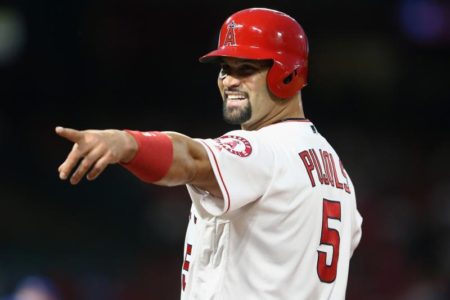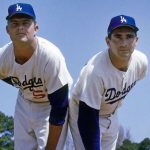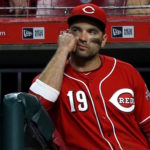Pujols 3,000 Is Big, But Pujols 2,000 Is Even Bigger
 At the beginning of May, Albert Pujols sits just outside of perhaps the most celebrated club in baseball history: the 3,000 hit club. Albert Pujols will become the 32nd player in major league history to achieve this plateau, and baseball will be watching daily until it happens, perhaps as early as this week.
At the beginning of May, Albert Pujols sits just outside of perhaps the most celebrated club in baseball history: the 3,000 hit club. Albert Pujols will become the 32nd player in major league history to achieve this plateau, and baseball will be watching daily until it happens, perhaps as early as this week.
As someone who can count all of the hits he ever had in organized baseball on both hands, I recognize the magnitude of this accomplishment. Only the greatest hitters to play the game can claim membership in the 3,000 hit club. Great hitters like Babe Ruth and Ted Williams never made it to this level, so it’s an accomplishment to commemorate, whenever it happens.
But Albert Pujols is also on the cusp of something much rarer than 3,000 hits, and we won’t have to wait very long to see it, either.
In the long history of baseball, stretching all the way back to 1876, just three players have driven in 2,000 runs for their career. In my lifetime, I’ve seen sluggers like Reggie Jackson and Mike Schmidt drive in 100+ runs a year for many seasons on end, but still not get a whiff of 2,000 for their careers (for the record, Jackson had 1,702 RBI and Schmidt had 1,595).
Speaking of sluggers, Ken Griffey Jr., Sammy Sosa and Jim Thome each hit over 600 home runs in his career, but Griffey came the closest to 2,000 RBI (he ended up with 1,836), while neither Sosa nor Thome could break 1,700. It’s fair to say that getting to 2,000 career RBI is no easy feat. (And while I keep using this term in the singular tense, without an “s” at the end, I fully understand the urge to pluralize it, too.)
The most tantalyzing near-miss in this regard was Lou Gehrig, who racked up 1,994 RBI in his first 16 seasons with the New York Yankees, and was poised to join Ruth as just the second player with 2,000 when disaster struck in the early days of the 1939 season. Ruth’s career record of 2,213 RBI would have lasted another two seasons, at best, if Gehrig had been able to play into his late 30s. But regrettably, that’s not how things played out for him.
Stan Musial missed the entire 1945 season because of World War II, and this almost certainly cost him entrance into the 2,000 RBI club, since he retired in 1963 with 1,951 to his credit. It wouldn’t be until the 1970s that a second player joined Ruth with 2,000 career RBI. Henry Aaron reached this milestone in 1972 and, just like he broke Ruth’s career home run record in 1974, he also broke Ruth’s career RBI record on May 1, 1975. For more than forty years, Aaron’s 2,297 career RBI have been the high-water mark among all MLB players.
In June of 2015, Alex Rodriguez became the third and final member of this very exclusive club, ending up with 2,086 RBI before he retired in 2016. Considering that it took nearly a century for the 2,000 RBI club to gain its first two members, the fact that we are about to see another two members added in the past four seasons is nothing short of remarkable.
So when will this event take place? There’s a long ten-game homestand for the Angels coming out of the All-Star break in July, but that’s a lot to ask of a 38-year old, even one as phenomenal as The Machine has been throughout his career. August is light on Angels home games, but September ends with 13 games at home—all against division foes—over the final three weeks of the season. The two home series scheduled against the Texas Rangers in September are also as good a time as any to see history being made.
The Angels would much rather have the 2,000th RBI happen at home, because that brings in some additional gate, especially if there’s a pennant race going on at the same time. But whenever it happens, we won’t see it again for at least a few years, depending on how healthy Miguel Cabrera stays over the next three to five years. So, let’s all enjoy Albert’s 3,000th hit later this month, and be ready to check back in a few months for an even bigger career milestone.


























